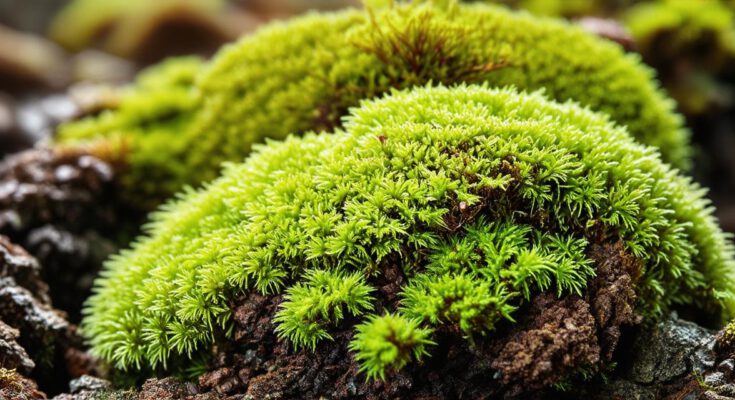Mutualistic Associations
In a mutualistic association, both the cryptogam and the fungus benefit from the symbiotic relationship. One example of mutualism is mycorrhizae, a type of association between the roots of plants and certain fungi.
Mycorrhizal fungi form an extensive network of hyphae that extend far beyond the root system of the plant, allowing them to access nutrients from the soil that are not readily available to the plant’s roots alone. In return, the fungus receives sugars produced by the plant through photosynthesis.
Another example of mutualism is the association between sea anemones and clownfish.
Sea anemones provide protection for clownfish by sheltering them from predators and stinging other marine animals that come near their tentacles. In return, clownfish help to clean the anemone’s tentacles and drive away polyp-eating fish.
Parasitic Associations
In contrast to mutualistic associations, parasitic associations involve one organism benefiting at the expense of another. One example of parasitism is the relationship between rust fungi and their host plants.
Rust fungi attach to the leaves or stems of plants and feed on them, causing them to wilt and die. This can lead to significant crop losses and economic damage.
Another example of parasitism is the association between fleas and their hosts.
Fleas attach themselves to animals, feeding on their blood and transmitting diseases. This can cause significant health problems for both humans and animals.
Applications of Cryptogams
Cryptogams have a variety of applications in medicine, agriculture, and industry.
In medicine, mycorrhizal fungi are being studied as potential treatments for various diseases, including cancer and autoimmune disorders. Additionally, some fungi produce natural products that have medicinal properties, such as antibiotics and antifungals.
In agriculture, mycorrhizal associations can improve the nutrient uptake of crops, leading to increased yields and higher quality produce. This can be particularly beneficial in regions where soil nutrients are scarce. Additionally, fungi can be used in bioremediation, breaking down pollutants and contaminants in the environment.
In industry, fungi have a variety of applications, including the production of biofuels, enzymes, and other valuable chemicals. For example, some fungi can produce xylitol, a natural sweetener that can be used as an alternative to sugar. Additionally, fungi are being studied for their potential use in biodegradable plastics and other sustainable materials.
Risks of Cryptogams
While cryptogams have many benefits, they also come with some risks.
One risk is the potential for invasive species to disrupt ecosystems and cause damage to native plants and animals.
Additionally, some fungi can produce allergens or toxic substances that can be harmful to humans and animals.
FAQs
What are cryptogams?
Cryptogams are organisms that form mutualistic or parasitic relationships with fungi. These associations can be found in various environments, including soil, water, and on the surface of plants.
What are some examples of mutualistic cryptogam associations?
Mycorrhizae is a type of association between the roots of plants and certain fungi that form an extensive network of hyphae and access nutrients from the soil. Sea anemones provide protection for clownfish by sheltering them from predators and stinging other marine animals that come near their tentacles.
What are some examples of parasitic cryptogam associations?
Rust fungi attach to the leaves or stems of plants and feed on them, causing them to wilt and die. Fleas attach themselves to animals, feeding on their blood and transmitting diseases.
What are some applications of cryptogams in medicine?
Mycorrhizal fungi are being studied as potential treatments for various diseases, including cancer and autoimmune disorders. Some fungi produce natural products that have medicinal properties, such as antibiotics and antifungals.
What are some applications of cryptogams in agriculture?
Mycorrhizal associations can improve the nutrient uptake of crops, leading to increased yields and higher quality produce. Fungi can be used in bioremediation, breaking down pollutants and contaminants in the environment.
What are some applications of cryptogams in industry?
Fungi have a variety of applications in industry, including the production of biofuels, enzymes, and other valuable chemicals. Some fungi can produce xylitol, a natural sweetener that can be used as an alternative to sugar. Fungi are also being studied for their potential use in biodegradable plastics and other sustainable materials.
What are some risks of cryptogams?
Invasive species of cryptogams can disrupt ecosystems and cause damage to native plants and animals. Some fungi can produce allergens or toxic substances that can be harmful to humans and animals.



